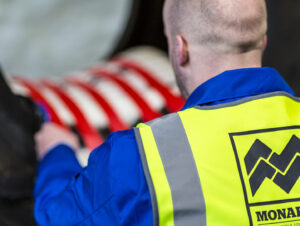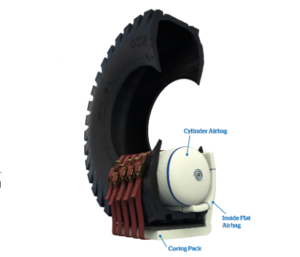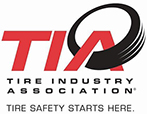Achieving the best OTR tyre repairs
What is the secret to achieving the best OTR tyre repairs? Over the (many) years we’ve been in the tyre repair industry we have seen it all…good repairs, great repairs and unfortunately all sorts of bad practice as well. 
Optimising your operation by following best practice is hugely important so that you can ensure every repaired OTR tyre is safe and provides maximum value.
So what will make your OTR tyre repairs stronger and better than the rest? Our expert team share some of the highlights from their best practice tips…
Training is everything
All technicians need adequate training in all aspects of the tyre itself as well as the repair process. Do all team members understand the following?
- Safe working procedures and risk assessment – crictically important considering the weight and size of OTR tyres
- Assessing tyre repair viability
- The function and nature of different tyres
- Relevant naming conventions and terminology
- Tyre construction
- Correct tool and equipment use and maintenance
- Correct repair procedures
- The importance of a clean working environment and how to achieve it
- Record keeping, trend tracking and reporting
Inspect every injury thoroughly
A comprehensive inspection process assessing the injury’s size and its location in the tyre is vital:
- Is repairing the injury legal and safe? Knowledge of, and consultation with, relevant manufacturer, company and legislative guidelines must inform these decisions.
- Is there an economic case for making the repair i.e. what is the general tyre condition? How much tread is remaining?
- Is there more than one injury/ less obvious damage to consider?
- How far below the surface does the injury extend?
- Carefully record all relevant details.
Carefully assess the repair
Consider the following:
- What tools are required?
- What are the HAZMAT requirements and safety considerations?
- How can you remove the structural damage?
- What is the correct skive angle and buff texture?
- What is the maximum recommended injury size and the right patch? Always consult patch manufacturer application charts and guidelines.
Create a clean, ordered environment
Reducing contamination and creating a safe, ordered environment is vital:
- Ideally the workshop will be dedicated to repairs so you have control over the conditions.
- Have different physical zones for initial injury preparation and the fill and cure stage.
- Ventilate adequately.
- Keep the workshop clean via diligent housekeeping.
- Tyres awaiting repair should be kept covered to reduce dust and water contamination.
- Don’t barrel stack tyres awaiting repair – the beads may collapse and cause problems with accessing the liners.
Use quality supplies
Only use quality products – from tools to rubber, patches and vulcanizing equipment. Quality matters!
Understand your vulcanising system
Get to know your OTR tyre vulcanising system.
- Get the right training – Monaflex can provide bespoke OTR tyre repairs training for your team and also offers a variety of video tutorials and best practice usage guides.
- Consult application charts to ensure you have the correct components for the job.
- Care for your system. Correct and timely maintenance will ensure you get the best results every time.
Conduct a final inspection
This stage is as important as the initial inspection.
- Did the technician find and repair all damage?
- What does the repair look like? Are there signs of under cure, bubbles or separation?
- Record the shore hardness.
- Is the crown profile faithful to the original tread design?
- Should the repaired tyre be down-graded usage wise?
- Record and report all relevant data.
We’re on hand to help you optimise your operations and achieve the best OTR tyre repairs, please get in touch to chat with our team of tyre industry experts.
Just some of the resources available for Monaflex customers:
- The Monaflex Best Practice Guide: Getting the most out of your Monaflex system. Get in touch for a copy.
- The Monaflex Training Programme
- Ongoing and unlimited one to one guidance and support from the Monaflex technical team. Choose email, phone, Zoom or whatever is convenient for you.

Any advice given by MVS Ltd. (Monaflex) does not replace instructions supplied by the manufacturer of repair materials, tyres, tools and any other component parts or items in use. It does not replace guidelines, recommendations, usage regulations or any type of requirement stipulated at a company, legislative or any level.
MVS Ltd. accepts no liability for any consequential losses or damage of any kind arising directly or indirectly from the use of its products or services. End users are advised to carry adequate insurance cover in this respect.
Please consult all available tyre safety guidelines including these non-exhaustive highlights and get in touch if you have any questions about tyre repair safety or require necessary equipment.

